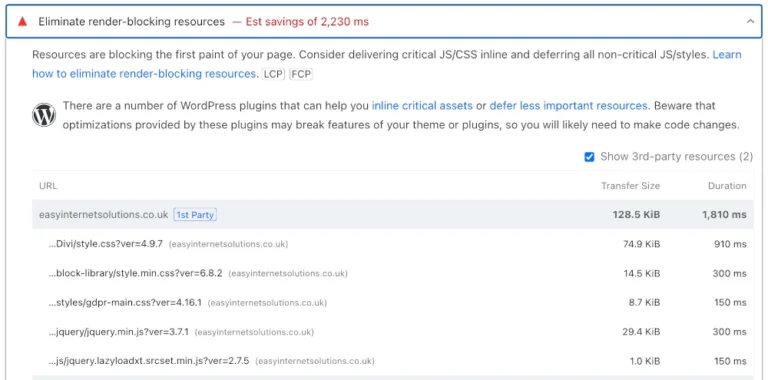An introduction to Search Engine Optimisation (SEO).
An introduction to search engine optimisation (SEO), what it is, why you might need it, an overview of how SEO works, SEO basics and how to go about optimising your website for search engines.
- What is search engine optimisation?
- Why you might need search engine optimisation.
- An overview of SEO.
- Your SEO basics.
- How to go about optimising your site for search engines.
- Conclusion.
What is search engine optimisation?
You’re probably familiar with search engines, even if you don’t know them by this name. Google, Bing, Duck Duck Go, and Yahoo search are all examples of search engines. You use search engines to find websites based on phrases or works entered into a search engine.
How does the search engine know which websites to display? How does the search engine determine the order of websites listed in results?
Believe it or not, these search engines have read all the websites that you see in search results. Each search engine has it’s own robot (or bot) that reads websites. These look for, and record, certain indicators on website’s pages. These indicators are all recorded to a database. This database is queried to provide search results. A website’s rank, or page ranking, is the position in which it appears in search engine results. The recorded indicators also affect the ranking of a page or website in search results.
Search engine optimisation improves a website’s ranking position for certain search terms.
The purpose of search engine optimisation is to allow websites to be easily when searching for specific words or phrases. A well optimised website will gain more valuable visits than a poorly optimised website. You might also think of SEO as significant aspect of online marketing for a business due to this.
Why you might need SEO.
SEO is required for a website to be easily found in search engine results.
Search engine optimisation isn’t of the same importance to all websites. If you run a website for your local football club SEO might not be so important. Club members are likely to know the website’s address. This allows them to visit the site directly, rather than having to search for it. SEO might not be such an important factor in this context. Conversely, if you’re running a website for a business, and would like new customers to be able to find your website by searching in Google, SEO is a much more important factor.
In addition, there’s also an element of competition to take in to account when it comes to search engine optimisation.
A lot of potential customers turn to the internet to locate an individual or business that provides a certain product or service. Should two business be providing the same service, and only one business has undertaken SEO on their website, this will attract more new customers simply because it’s easier to find.
SEO is fundamental to a website’s visibility, and to be able to compete for customers (or visitors).
An overview of SEO.
Now you know what SEO is and why it’s used. What follows is an introduction to search engine optimisation. This guidance contains generalised advice. What you’ll need to click on varies between how your site has been made, and the SEO tools you’re using.
It’s a secret how SEO works. There’s no manual for SEO.
Imagine, for a moment, what would happen if there was a manual. EVERYONE’s website would be at the top of page one. Page one wouldn’t be very long, but it would be very, very wide if everyone’s website was at the top of page one. This wouldn’t help anyone. It’s probably for this reason that nobody knows for sure how SEO entirely works. Most of what you read about SEO will either be general advice, or how people think SEO works due to this. That includes this post.
There are some aspects of SEO that we can be fairly sure about. These fall in to two categories:
- On page SEO
- Off page SEO
On Page SEO
On page SEO consists of the content of web pages and the performance of a website. Everything on the website is specific to on page SEO.
Off Page SEO
Off page SEO are aspects external to a website that influence ranking in search engine results. These might consist of links to a website from other websites, paid for adverts, or external marketing campaigns such as mail shots. External sources that refer to the website is off page SEO.
Key Ranking Factors
When researching SEO, it’s very easy to become overwhelmed with lots of different tasks specific to different ranking factors. Initially it’s beneficial to understand the purpose of search engines, and that’s to provide relevant results.
If you’re old enough to remember Google’s launch (like I am), you might remember how using Google was different from other search engines. Google achieved something other search engines hadn’t. This was to display relevant results at the top of the page. This gives us our first key ranking factor:
Relevance
When someone searches for “cake recipes” they want to be provided with a list of websites that contain cake recipes. The websites in the list of results are likely to be more relevant if they mention the words “cake” and “recipe”. Also mentioning words common to making cakes such as “ingredients” and “bake” is likely to make a website more relevant. Putting these words in prominent positions, such as paragraph titles is also likely to make a website appear more relevant.
As all of what I’ve mentioned above is centric to the text on a web page, this is an example of on page SEO.
But what if the website mentions all these words, but is written by someone with niche tastes, that likes making cakes out of spiders and cheese? Well… not a lot of people like spider cheesecake. Due to this it’s unlikely that other people are going to refer to this type of site. Which bring us to:
Authority
If a website contains good information, other people (running) websites, tend to recommend it. They do this by publishing links from their website to the website containing good information. These links are called backlinks. Backlinks influence a website’s authority. The more quality backlinks the greater a website’s authority. The greater the authority, the better the ranking.
If a website contains good information people are more likely to link to it. Then again, how do they find that website in the first place if it’s not ranking due to a lack of backlinks? It’s effectively a catch 22 situation.
The “advisable” ways of gaining backlinks would be to undertake actions such as:
- Registering your site with reputable business directories (yell.com, thomsonlocal.com, and Cylex-uk for example).
- Guest blog posting (having people blog for your site in exchange for you blogging on theirs, each of you backlinking when doing so)
- Resource Page Link Building (identify websites with resource pages that link to valuable content in your niche. Contact the webmaster, and suggest adding your resource to their list).
- Leverage social media (post content on social media that links to your website).
- Create high quality content (and let people backlink to it, just because it’s so great).
The “unadvisable” way to gain backlinks is to cheat. Search engines are likely detect these methods and penalise your website:
- Buying backlinks
- Using spammy or low quality business directories (if you haven’t heard of it, question using it).
- Link exchange schemes (you link to me, I’ll link to you. These suffer the same penalties as buying backlinks).
- Blog networks (setting up blogs just to link to your site, again this is detectable and penalised).
- Comment spamming (leaving comments on blogs with links to your site).
Generally speaking, any backlinking should add some kind of value, relate to quality content, and involve some kind of effort. Search engines use backlinks as a ranking factor. Gaming this system often results in penalties being applied, such as ranking demotion.
Quality Content.
Most search engines want people to be reading the internet, simply so their services are used more. To keep people reading the internet a certain level of quality is required. This isn’t necessarily being a subject matter expert and providing high brow content. There’s more value to content that’s both accurate AND accessible to a greater number of people.
If we take a subject matter such as the evolution of humans for example. One site talks about genetics, evolution, contains lots of latin words and has a lot of paragraphs and no pictures. The other site talks about the lineage of predecessors to humans, what they looked like, what they ate and how they behaved. Pictures and maps are more common on this second site as well.
Which site engages a wider audience? Which site keeps a greater number or people interested for a greater amount of time? it’s more likely to be the second site isn’t it. The second site is also more likely to rank better due to the nature of it’s content, than the first.
You don’t have to be a subject matter expert to generate quality content. It’s often more beneficial to tailor content to a wider audience than it is to do something like contain a lot of terminology.
Your SEO basics.
In addition to the content of your site, there are certain tools and facilities that are tied in to SEO. These are:
- A robots.txt file
- A sitemap
- Webmaster tools accounts
Robots.txt
Robots.txt is a plain text file that’s placed in the document root of your website (where all your site files are held). A robots.txt file contains a set of instructions for search engine robots (also called bots, crawlers or spiders). When you instruct a search engine to go and read your website, the first thing the search engine’s robot will to is read the robots.txt file to obtain your instructions.
The sort of instructions that would be put in a robots.txt file are which robots the instructions should apply to, what should and shouldn’t be read by the robot, and the location of your website’s sitemap. So a very basic robots.txt would contain this:
User-Agent: *
Allow: /
Sitemap: https://netnerd.com/sitemap.xmlWhat this means is:
User-Agent: * = All robots
Allow: / = You can crawl everything you find
Sitemap: https://netnerd.com/sitemap.xml = This is where you can find the sitemap
There are lots of tools that you can use to generate a robots.txt file, such as:
https://dnschecker.org/robots-txt-generator.php
http://tools.seobook.com/robots-txt/generator/
https://smallseotools.com/robots-txt-generator
A sitemap
A sitemap is a list of all your website’s pages. Each page has a priority rating, which effectively states how important a particular page is, and a timestamp.
Sitemaps are written in XML. XML is fairly easy to understand (if you’re that way inclined). If you do decide to manually manage your site map and manually write the XML, be careful. Get the XML wrong and that could confuse a robot!
You can automate the management of your sitemap. WordPress SEO plugins often provide this facility. Rank Math and Yoast can both be used to automatically generate and maintain sitemaps.
The purpose of the sitemap is a bit like the contents of a book. Robots use the sitemap to establish the pages it should read.
The combination of a robots.txt and the sitemap give a set of instructions to robots, along with a list of pages to read.
Webmaster Tools Accounts
Webmaster tools accounts are accounts provided by search engines. You’d register for a webmaster tools account, and then use it to instruct the respective search engine to go and read your website or a page on your website.
Exactly how you instruct the search engine to send it’s robot to your site to read it varies between search engines. Indexing or crawling is what a robot does to a website when reading it. The Google bot is instructed to index your website using Googles URL inspection tool, which is available in Google Webmaster Tools accounts.
How to go about optimising your site for search engines.
Hopefully, you’ll have taken the above in to account. If you have, you should have some quality content ready to go, a robots.txt in place, and a sitemap that lists the page containing your high quality content. Before you request indexing via your webmaster tools account, you might consider undertaking some keyword optimisation.
Keywords
Keywords are specific words or phrases that people use when searching for information.
Search engines use keywords to understand the content of a webpage. They help the search engine match web pages with relevant search queries.
Your webpage should contain keywords that people are likely to search for. To find this post, people might search for “an introduction to search engine optimisation”. This post contains this phrase more than once.
On page SEO, in part, consists of using keywords in page content.
As well as the contents of paragraphs there are other parts of a page that robots and search engines pay attention to. These are:
- The slug (or page address/URL).
- The page’s <meta name=”description” content=”keyword-here”> meta description
- The <title> HTML tag.
- The <h1>, <h2>, and additional paragraph title tags.
- The first sentence of page content.
- Image alt tags
You can effectively use these aspects of your page to include keywords. Keywords will then appear to be more prevalent to search engines.
It’s possible to over optimise for keywords. This referred to as “keyword stuffing”. Again this is effectively gaming a system, so this type of over optimising can (at best) make your SEO less effective, or (at worst) ranking demotions.
It’s also advisable to distribute related keywords throughout a page. For example if you’re writing a page for an electrician’s website, related keywords that you might consider could be things like “electrical safety certificate” and “NICEIC”. Mind maps are often used to plan out related keywords.
Internal and External Links
Search engine’s robots discover links on pages. Where these link to help the robot or search engine identify related external websites and related internal resources, such as other pages on your website.
The related content in links supports the content of the page itself. Due to this it’s advisable to have a link to another page on your site, and a link to a resource external to your site. Both should relate to the topic of the page, or the keywords you’re using.
Quality of Content
The quality of page content is used by search engines to asses web pages, and determine their rankings. The easiest way to think of this is that people visiting your site’s pages should find value in your content.
For example, I could simply say:
“The speed at which a page loads can affect page rankings.”
Alternatively I could say:
“Since early 2022 Google have used website performance as a ranking factor. How fast pages load and how well they perform affects more than rankings alone. Visitors to your website will have an improved experience when visiting your website, as nobody likes a website loading slowly. Improved page loading times can lead to a greater amount of sales. Vodafone A/B saw a sales increase of 8% after improving their LCP metric by 31%.”
I’m sure you can see how this illustrates a difference in the quality of content.
Researching a topic, and covering it in depth often results in improved quality.
E.A.T.
E.A.T. This stands for Expertise, Authoritativeness, and Trustworthiness.
Expertise is shown by demonstrating a high level of knowledge about the topic.
Authoritativeness is show by a website and the content itself should be recognised as an authority in its field. Both backlinks (as mentioned above) and the quality of content relate to this.
Trustworthiness can be shown by a site being reliable and secure. The padlock in the browser’s address bar, clear authorship, contact information, and a privacy policy all contribute to this. Consistent address listings across your website and any business directories that you list with also influences trustworthiness.
Although google state that EAT isn’t a ranking factor, EAT helps influence quality, compelling and reliable content which ARE ranking factors.
Website Performance.
Website performance is also a ranking factor. This can be one of the harder SEO aspects to cover. It’s for this reason that we offer a Website Optimisation Service.
So far, most of what we’ve covered has been to do with basic SEO set up, and SEO based on page content and external websites that link to yours. These are both fairly straight forward to carry out, and to achieve.
Improving website performance can be a lot harder to achieve than most of the other factors that have been mentioned so far.
Core Web Vitals.
Google asses websites based on what they refer to as “Core Web Vitals“. These are a collection of metrics that Google use to asses how well as site performs. So not only do you need to ensure that your content is of sufficient quality, but also that your website passes these performance tests that Google carry out.
The metrics that Google take in to account when measuring core web vitals are:
- Time to First Byte (the time between a page being requested and the initial page output starting)
- First Contentful Paint (the initial “draw” of the webpage)
- Interaction to Next Paint (how quickly a page responds to user interaction)
- Largest Contentful Paint (the “draw” of the largest part of the webpage)
- Cumulative Layout Shift (elements on the page moving as the page loads)
Covering all of these aspects in any depth would be a blog post in itself. To give you an idea of what’s involved in optimising Core Web Vitals, it may be worth you taking a look at Google’s video that covers an in depth overview of optimising LCP. Just to reassure you, we offer a Website Optimisation Service that covers these metrics.
General Performance Optimisation Advice.
Despite optimising for Core Web Vitals being rather in depth, there are some initial measures that can be taken that will help improve these metrics. In the context of WordPress, these simple steps will help improve website performance.
- Ensure your hosting provides at least 1GB of RAM and 1CPU core.
- Ensure object caching is available in your hosting.
- Use hosting that provides the Litespeed web server.
- Don’t use too many plugins.
- Use a lightweight theme.
- Try and use the built in blocks editor, rather than a drag and drop page builder.
- Use a content delivery network such as Cloudflare or QUIC.cloud.
The WordPress hosting that we provide covers the top three points on this list by default.
Conclusion.
SEO or search engine optimisation isn’t a single activity, but a collection of activities that you’d undertake on your website, and in conjunction with your website to improve it’s ranking in search engine results.
Understanding how you inform a search engine about your site using a robots.txt file, a sitemap and a webmaster tools account are key to being able to have search engines read, crawl or index your site.
The factors used to establish how your site appears in search engine results can be divided into two categories; on page SEO and off page SEO.
Off page SEO consists of aspects external to your website, such as backlinks and business listings that refer to your site.
On page SEO consists of the content of pages, the quality of webpages, the keywords included on webpages. Performance is also considered and assessed as part of on page SEO.
Whilst most of the on page activities are specific to page content and writing, the performance aspect requires a degree of technical knowhow and skill.
Some sensible steps can be taken to help with performance, even if you’re still working on the skills involved with performance optimisation.







